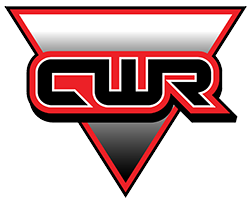Seasonal Maintenance Checklist – Preparing Your Refrigeration System for Temperature Swings
Temperature swings can put significant strain on industrial refrigeration systems, especially in facilities that operate year-round, like food processing plants, cold storage warehouses, beverage producers, and agricultural operations. As outdoor conditions shift from hot to cold or cold to hot, refrigeration equipment has to work harder to maintain stable temperatures inside the facility.
Seasonal maintenance isn’t just routine housekeeping—it’s one of the most effective ways to prevent energy waste, unexpected breakdowns, and costly product loss. With thoughtful preparation, facility managers can keep systems operating efficiently and identify issues long before they become emergencies.
Here’s a detailed, practical checklist to help your facility stay ahead of seasonal changes and ensure your refrigeration system remains reliable no matter what the weather is doing outside.
Inspect and Clean Condensers
Condensers are highly sensitive to outdoor temperature fluctuations. When the weather warms up, dirty or restricted condenser coils force the system to work much harder to reject heat. By cleaning your condenser coils, you’re able to improve heat rejection, lower head pressure, and reduce overall system load, saving energy when temperatures peak.
What to check:
Remove dirt, dust, debris, cottonwood, or pollen buildup
Check for bent fins or airflow obstructions
Confirm fan motors and belts are operating properly
Inspect variable frequency drives (VFDs) if applicable
Evaluate Evaporators for Frost and Airflow Issues
Seasonal humidity changes can increase moisture levels in refrigerated spaces, which often leads to frost buildup or ice accumulation on evaporator coils. When this happens, cooling capacity is reduced, forcing compressors to run longer, increasing energy costs and decreasing system reliability.
What to check:
Coil frost levels and airflow restrictions
Proper function of defrost cycles
Drain pan cleanliness and unobstructed drains
Fan motors, bearings, and blade condition
Test System Controls and Sensors
As temperatures swing, controls play a major role in maintaining consistent operation. Even slight deviations in sensor accuracy can mean the difference between stable product temperatures and operational downtime.
What to check:
Calibrate temperature and pressure sensors
Test safeties, alarms, and interlocks
Verify setpoints for compressors, condensers, evaporators, and defrost cycles
Inspect wiring and connections for wear or corrosion
Review Refrigerant Levels and Check for Leaks
Temperature fluctuations can affect pressure balances, making undetected leaks more problematic during seasonal transitions. By maintaining proper refrigerant charge, you prevent inefficiency, protect compressor health, and ensure your system delivers its full capacity.
What to check:
Suction and discharge pressure trends
Liquid levels in receivers
Oil levels indicating possible leaks
Leak detection monitors and alarm functionality
Inspect Compressors for Efficiency and Wear
Compressors shoulder the most significant workload during seasonal changes, particularly during warm weather. Any sign of stress or inefficiency can become a major issue quickly. With early detection of performance issues, you can prevent breakdowns and increase your compressor’s lifespan.
What to check:
Oil quality (send out for analysis if needed)
Vibration levels
Suction superheat and discharge temperatures
Valve plate integrity
Motor amperages and electrical connections
Confirm Proper Operation of Defrost Systems
Defrost requirements tend to change with seasonal humidity. If defrost cycles are too frequent or too infrequent, both energy efficiency and product quality can suffer. Optimized defrosting saves energy, improves evaporator performance, and reduces temperature fluctuations inside refrigerated spaces.
What to check:
Review time-initiated or demand-defrost settings
Inspect heaters, solenoids, and termination sensors
Confirm proper ice melt and drainage
Test and Service Condenser Water Systems (For Evaporative Models)
For facilities that rely on evaporative condensers, seasonal temperature changes often require water system adjustments to maintain efficiency. Proper water system maintenance significantly improves heat rejection and extends equipment life.
What to check:
Water treatment levels to prevent scale or corrosion
Basin cleanliness and water distribution
Pump operation and flow rates
Fan sequencing to match seasonal loads
Review System Start-Up and Shutdown Procedures
During seasonal transitions, some facilities increase or decrease production, while others bring systems offline temporarily. It’s important to verify that proper start-up or shutdown steps are followed. By avoiding thermal shock and electrical stress, you can protect core components and ensure smooth, reliable system operation.
What to check:
Correct oil return
Stable pressures during start-up
Proper sequencing for multi-compressor systems
Standby equipment readiness
Validate Compliance Documentation and Safety Systems
With every season change, it’s a good time to review safety records and required documentation, especially for ammonia systems governed by PSM and IIAR standards. Seasonal maintenance also provides a natural checkpoint for safety compliance, reducing the risk of violations or preventable incidents.
What to check:
Relief valve schedules
SOP updates
Emergency ventilation testing
Alarm logs and panel notifications
Leak detection and emergency shutoff readiness
Consider a Professional Seasonal Tune-Up
While many facilities handle day-to-day maintenance in-house, seasonal transitions often require a deeper level of inspection and system knowledge. A professional tune-up can identify issues that aren’t visible from routine checks, including control logic problems, load imbalances, airflow deficiencies, and early-stage compressor or fan failures. This results in higher efficiency, lower operating costs, and fewer surprises when extreme temperatures hit.
A Strong Season Starts With Strong Preparation
Temperature swings challenge even the best refrigeration systems, but with a proactive seasonal maintenance plan, your facility can operate efficiently, reliably, and safely all year long.
Whether you operate a food processing plant, beverage facility, cold storage warehouse, or agricultural operation, smart seasonal maintenance protects your product, your equipment, and your bottom line.
Ready to prepare your system for the season ahead? Connect with the Central Washington Refrigeration team today at 509-248-4600.
